Do you have a question about the Sony Trinitron KV-27FV310 and is the answer not in the manual?
Procedures for removing the rear cover of the TV set.
Steps to remove the main chassis assembly from the TV.
Instructions for positioning the TV for service access.
Detailed steps for safely removing the picture tube, including anode cap procedures.
Adjusting beam landing for optimal picture geometry and purity.
Steps for aligning red, green, and blue convergence dots for a clear image.
Procedure for adjusting the picture focus for sharpness and detail.
Verifying and readjusting HV hold-down for safety-related component confirmation.
Testing and adjusting HV levels for high-light and cut-off conditions.
How to enter service mode, use remote buttons, and confirm/write adjustments.
Reference tables for service data, ID maps, and A board adjustments.
Procedures for frequency, contrast, color, geometry, and display position adjustments.
Identifying circuit board locations and understanding PWB/schematic diagram conventions.
High-level functional block diagrams of the TV's systems.
Detailed circuit schematics and related information for various TV boards.
Illustrated parts breakdown for chassis and picture tube across different models.
Critical safety warnings regarding electric shock, component handling, and proper procedures.
Recommendations for safe installation, ventilation, and resolving radio frequency interference.
Guidelines for preventing TV damage and information on closed captioning compliance.
Essential safety checks, AC leakage testing, and earth ground verification after repairs.
Explanation of LED flash codes and a guide to diagnosing errors based on symptoms.
Procedures for displaying, handling, and clearing self-diagnostic screen data.
Situations requiring professional service and warnings against self-repair due to hazards.
Guidelines for using correct replacement parts and performing post-service safety checks.
Precautions for grounding outdoor antennas and protecting the TV from lightning.
Overview of the TV's key technological features and benefits.
Guidance on using the manual and operating the TV via remote and front panel controls.
Detailed explanation of each button's function on the remote control for TV and equipment operation.
Step-by-step guide to program the remote for VCR, DVD, and other equipment.
Lists of codes for programming the remote to control various equipment brands.
List of codes for programming the remote to control satellite receivers.
How to use the remote control to operate VCRs and DVD players.
Identification and description of all rear panel input/output jacks for connectivity.
Instructions for connecting antennas and cable systems to the TV for signal reception.
Steps to connect a cable box for accessing scrambled channels.
Steps to connect a VCR to the TV for playback and recording.
Connecting DVD player using component video and audio cables for enhanced quality.
Guide to initial TV setup using Auto Program for channels and initial configuration.
Procedure to restore TV to its original factory default settings.
Setting the TV's clock and programming scheduled viewing using Timers 1 and 2.
Configuring caption vision, video labels, language, tilt, and demo modes.
Accessing and adjusting commonly used menu settings.
How to activate, display, and change channels/inputs in PIP mode.
Explanation of remote control buttons for PIP feature control.
Steps to display, highlight, select, and exit TV menus.
How to set favorite channels and configure cable reception settings.
Setting channel fix, managing video inputs, and using AUX inputs.
Performing auto program, skipping, adding, and labeling channels.
Setting and confirming a 4-digit password for parental control access.
Choosing preset or custom rating limits for TV programs based on age and content.
Procedures for changing the password and selecting the country for rating systems.
How to temporarily unlock blocked programs and configure custom ratings.
Defines rating levels for movies shown in theaters and on cable channels.
Explains TV rating groups based on age and content for US programs.
Defines rating levels for Canadian programs broadcast in English and French.
Refers to TV rating system for US programs.
How to set the TV's clock and program scheduled viewing using Timers 1 and 2.
Configuring closed captioning modes and labeling connected video equipment.
Adjusting tilt correction, display language, and 16:9 enhanced settings.
Running a demonstration of the on-screen menus.
Adjusting picture contrast, caption vision, and audio effects.
Returning to the advanced menus from the basic menu.
Solutions for common TV problems like factory reset, menu access, and remote control malfunctions.
Remedies for picture, sound, digital cable box, and PIP problems.
Solutions for remote control not working, channel changes, and reprogramming after battery replacement.
Remedies for no picture, no sound, poor picture, color problems, and screen snow.
Solutions for dotted lines, stripes, double images, and antenna/cable issues.
Steps to resolve issues where the picture is fine but there is no sound.
Ensuring correct settings for UHF channels and cable station functionality.
Resolving issues when only TV channels can be accessed and video inputs are skipped in PIP.
Solutions for remote control issues in PIP, static, or missing window pictures.
Addressing issues with same program display and visibility of VIDEO 4-5 inputs in PIP.
Guide for printing full-size and tiled schematic diagrams using large format printers.
Method for printing only a selected portion of a schematic using the Graphics Select tool.
Procedures for removing the rear cover of the TV set.
Steps to remove the main chassis assembly from the TV.
Instructions for positioning the TV for service access.
Detailed steps for safely removing the picture tube, including anode cap procedures.
Adjusting beam landing for optimal picture geometry and purity.
Steps for aligning red, green, and blue convergence dots for a clear image.
Procedure for adjusting the picture focus for sharpness and detail.
Verifying and readjusting HV hold-down for safety-related component confirmation.
Testing and adjusting HV levels for high-light and cut-off conditions.
How to enter service mode, use remote buttons, and confirm/write adjustments.
Reference tables for service data, ID maps, and A board adjustments.
Procedures for frequency, contrast, color, geometry, and display position adjustments.
Identifying circuit board locations and understanding PWB/schematic diagram conventions.
High-level functional block diagrams of the TV's systems.
Detailed circuit schematics and related information for various TV boards.
Illustrated parts breakdown for chassis and picture tube across different models.
Critical safety warnings regarding electric shock, component handling, and proper procedures.
Recommendations for safe installation, ventilation, and resolving radio frequency interference.
Guidelines for preventing TV damage and information on closed captioning compliance.
Essential safety checks, AC leakage testing, and earth ground verification after repairs.
Explanation of LED flash codes and a guide to diagnosing errors based on symptoms.
Procedures for displaying, handling, and clearing self-diagnostic screen data.
Situations requiring professional service and warnings against self-repair due to hazards.
Guidelines for using correct replacement parts and performing post-service safety checks.
Precautions for grounding outdoor antennas and protecting the TV from lightning.
Overview of the TV's key technological features and benefits.
Guidance on using the manual and operating the TV via remote and front panel controls.
Detailed explanation of each button's function on the remote control for TV and equipment operation.
Step-by-step guide to program the remote for VCR, DVD, and other equipment.
Lists of codes for programming the remote to control various equipment brands.
List of codes for programming the remote to control satellite receivers.
How to use the remote control to operate VCRs and DVD players.
Identification and description of all rear panel input/output jacks for connectivity.
Instructions for connecting antennas and cable systems to the TV for signal reception.
Steps to connect a cable box for accessing scrambled channels.
Steps to connect a VCR to the TV for playback and recording.
Connecting DVD player using component video and audio cables for enhanced quality.
Guide to initial TV setup using Auto Program for channels and initial configuration.
Procedure to restore TV to its original factory default settings.
Setting the TV's clock and programming scheduled viewing using Timers 1 and 2.
Configuring caption vision, video labels, language, tilt, and demo modes.
Accessing and adjusting commonly used menu settings.
How to activate, display, and change channels/inputs in PIP mode.
Explanation of remote control buttons for PIP feature control.
Steps to display, highlight, select, and exit TV menus.
How to set favorite channels and configure cable reception settings.
Setting channel fix, managing video inputs, and using AUX inputs.
Performing auto program, skipping, adding, and labeling channels.
Setting and confirming a 4-digit password for parental control access.
Choosing preset or custom rating limits for TV programs based on age and content.
Procedures for changing the password and selecting the country for rating systems.
How to temporarily unlock blocked programs and configure custom ratings.
Defines rating levels for movies shown in theaters and on cable channels.
Explains TV rating groups based on age and content for US programs.
Defines rating levels for Canadian programs broadcast in English and French.
Refers to TV rating system for US programs.
How to set the TV's clock and program scheduled viewing using Timers 1 and 2.
Configuring closed captioning modes and labeling connected video equipment.
Adjusting tilt correction, display language, and 16:9 enhanced settings.
Running a demonstration of the on-screen menus.
Adjusting picture contrast, caption vision, and audio effects.
Returning to the advanced menus from the basic menu.
Solutions for common TV problems like factory reset, menu access, and remote control malfunctions.
Remedies for picture, sound, digital cable box, and PIP problems.
Solutions for remote control not working, channel changes, and reprogramming after battery replacement.
Remedies for no picture, no sound, poor picture, color problems, and screen snow.
Solutions for dotted lines, stripes, double images, and antenna/cable issues.
Steps to resolve issues where the picture is fine but there is no sound.
Ensuring correct settings for UHF channels and cable station functionality.
Resolving issues when only TV channels can be accessed and video inputs are skipped in PIP.
Solutions for remote control issues in PIP, static, or missing window pictures.
Addressing issues with same program display and visibility of VIDEO 4-5 inputs in PIP.
Guide for printing full-size and tiled schematic diagrams using large format printers.
Method for printing only a selected portion of a schematic using the Graphics Select tool.
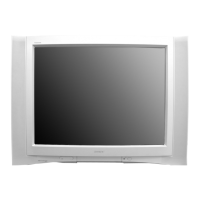
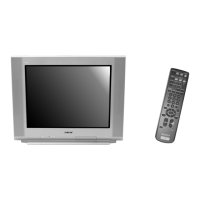
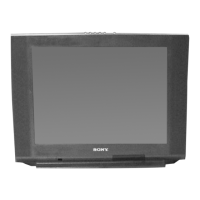
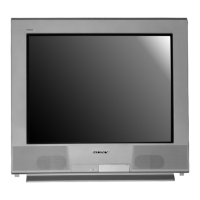
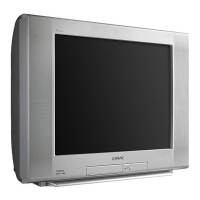
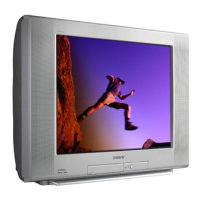
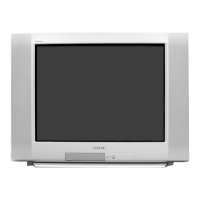
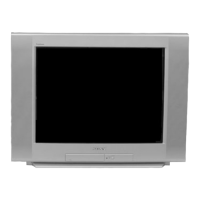




